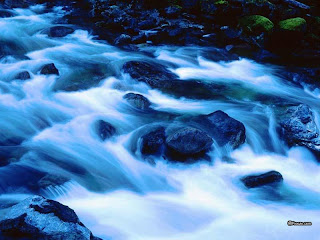WaterFalls....beautiful, magnificient and very interesting when you learn how its Formed!!
------------------------------------------------------------------------------------------------
Waterfalls are formed when a river flows over a large step in the rocks that may have been formed by a fault line. As it increases its velocity at the edge of the waterfall, it plucks material from the riverbed. This causes the waterfall to carve deeper into the bed and to recede upstream. Often over time, the waterfall will recede back to form a canyon or gorge downstream as it recedes upstream, and it will carve deeper into the ridge above it.
A waterfall has many different types;
Block: Water descends from a relatively wide stream or river.
Cascade: Water descends a series of rock steps.
Cataract: A large, powerful waterfall.
Fan: Water spreads horizontally as it descends while remaining in contact with bedrock.
Horsetail: Descending water maintains some contact with bedrock.
Plunge: Water descends vertically, losing contact with the bedrock surface.
Punchbowl: Water descends in a constricted form and then spreads out in a wider pool.
Segmented: Distinctly separate flows of water form as it descends.
Tiered: Water drops in a series of distinct steps or falls.
Multi-step: A series of waterfalls one after another of roughly the same size each with its own sunken plunge pool.






